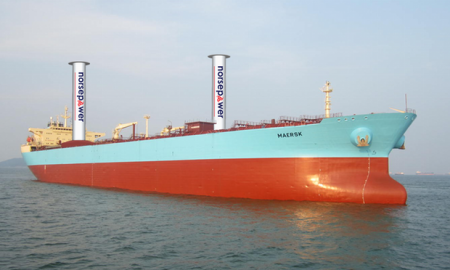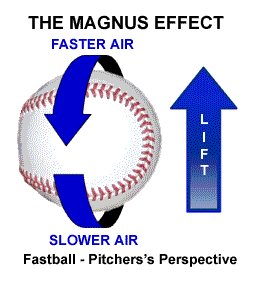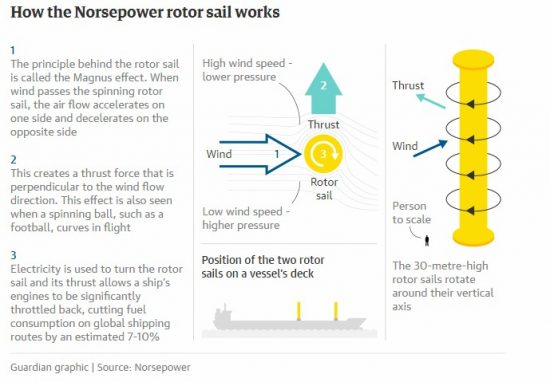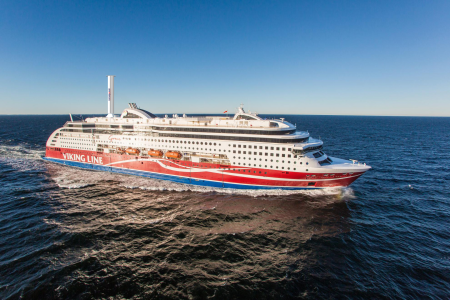March 16, 2017 – In 1926 a German engineer named Anton Flettner built a ship that included some surface deck structures that seemed oddly out of place. Described as spinning sails, they didn’t look anything like the canvas, spar and mast structures we associate with wind power driven vessels. Instead these structures were columns attached to electric motors that applied spin. The spin produces the same result as a sail being pushed from behind. Except, the type of propulsion produced comes from the Magnus Effect.
What is that? When spin is applied to object moving through an airstream it creates a propulsive force. If you play tennis and know how to put backspin on a ball then you are using the Magnus Effect to make that ball move in a different way. A pitcher and a baseball bat both use the Magnus Effect. The pitcher throws the ball applying a spin. The bat creates a counteracting spin. In both cases, the Magnus Effect changes the flight of the ball.
When Flettner built his two ships, one, the Barbara, outfitted with 15 meter (50 foot) tall rotors, traveled from Danzig, to South America, and finally to New York City using the technology for propulsion. Keeping the rotor sails spinning consumed too much power when compared to conventional screw propeller driven ships. The result, the technology was abandoned. But times have changed and the technology including materials used to build rotor sails has changed.
That’s why Maersk, the international marine fleet operator, has decided to launch a pilot project, retrofitting a 240-meter (790 foot) oil tanker with two 30-meter (almost 100 foot) rotor sails. These new rotors are the product of a Finnish company, Norsepower. Norsepower describes itself as a clean technology engineering company pioneering in the generation of renewable wind energy for the global maritime industry. It builds three different-sized rotor sails, the smallest 18 meters (60 feet), the intermediate, 24 meters (79 feet), and the tallest, 30 meters (100 feet), the ones being installed for Maersk.
Software controls, wind speed, ship speed and global position sensors help to optimize each sail’s performance. When wind direction changes the rotor spin can be reversed to take full advantage of the power and speed boost gained from the sail’s operation. The rotor sail requires 50 kilowatts of electricity to operate and generates the equivalent of 3 Megawatts of power.
To retrofit an existing ship there should be no obstructing cargo handling equipment on deck surfaces to create turbulence impacting rotor sail performance. Best candidates for rotor sail installation, states Norsepower, are ships traveling routes with constant, prevailing wind conditions over long distances. Cruise ships and tankers seem to best fit the bill.
Back in January, Norsepower and the Viking Line announced a rotor sail will be installed on the Viking Grace, a 57,565 ton cruise ship operating in the Baltic Sea and Gulf of Finland. The single rotor sail to be installed is the intermediate height version. Viking hopes to reduce its carbon emissions contribution by 900 tons annually and to save 300 tons in liquid natural gas fuel per year. The Viking Grace with rotor sail on board should be at sea by the end of 2018.
Andrew Scott, at the United Kingdom’s Energy Technologies Institute, when asked about rotor sails, states, “this is one of the few fuel-saving technologies that could offer double-digit percentage improvements” to marine fleet operations. The International Maritime Organization (IMO) recognizes that the burning of bunker oil, is highly polluting and contributes atmospheric aerosols as well as significant greenhouse gasses to the planet’s atmosphere. This Maersk installation will be monitored closely in anticipation that it will produce operational savings of 10% or more, reducing bunker fuel requirements by 1,000 tons, and carbon emissions by an estimated 3,000 tons per year. The Maersk ship with its rotor sails will begin to operate early in 2018.











